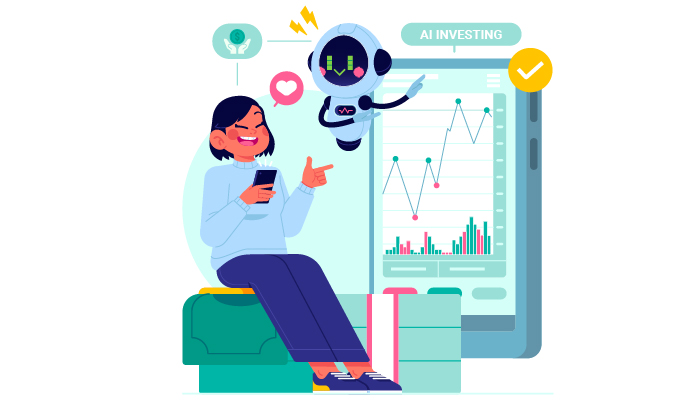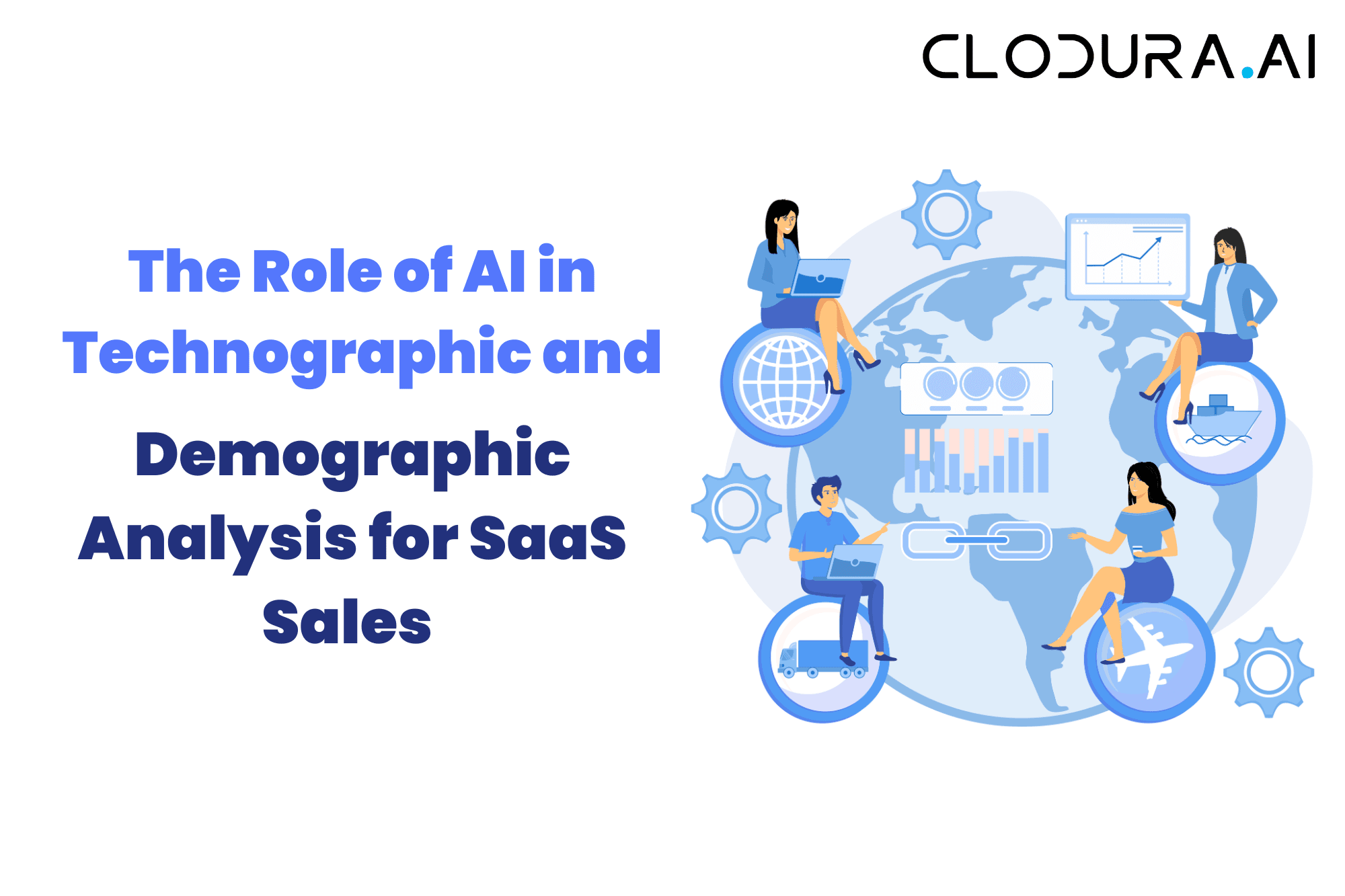Technographic and demographic analysis play a crucial role in the success of SaaS sales. By understanding the target audience and their needs, businesses can tailor their products and services to meet those demands effectively.
However, manual analysis can be time-consuming and prone to errors. That is where artificial intelligence (AI) comes in. With its ability to process vast amounts of data quickly and accurately, AI has revolutionized technographic and demographic analysis in the SaaS industry.
The Basics of AI in Technographic and Demographic Analysis
In order to understand the impact of AI in technographic and demographic analysis, it is essential to grasp the basics of how AI works in this context. AI algorithms are designed to analyze and interpret data to identify patterns and trends. They can process large datasets in real-time and extract valuable insights. This enables businesses to gain a deeper understanding of their target audience, including their preferences, behaviors, and purchasing patterns.
AI-powered technographic analysis relies on machine learning algorithms to analyze data from various sources, such as social media, web browsing patterns, and online interactions. By identifying specific technologies used by individuals or companies, businesses can better understand their needs and preferences.
For example, AI algorithms can analyze social media posts and interactions to determine which technologies are most popular among different demographic groups. This information can then be used to tailor marketing strategies and product offerings to specific segments of the market.
Similarly, demographic analysis utilizes AI algorithms to analyze demographic data, including age, gender, location, and other relevant factors, to create targeted marketing campaigns. AI algorithms can process vast amounts of demographic data and identify patterns and correlations that humans may not be able to detect. For instance, AI can analyze data from online surveys, customer databases, and public records to identify trends in consumer behavior based on demographic factors. This information can help businesses understand the preferences and needs of different demographic groups and develop marketing campaigns that resonate with their target audience.
Moreover, AI algorithms can also analyze the impact of technographic and demographic factors on consumer behavior. By combining technographic and demographic data, businesses can gain a comprehensive understanding of how specific technologies and demographic characteristics influence consumer preferences and purchasing decisions. For example, AI can analyze data on the usage of certain technologies among different age groups and determine how it affects their purchasing behavior. This information can be invaluable for businesses looking to optimize their marketing strategies and target their products and services more effectively.
Overall, AI plays a crucial role in technographic and demographic analysis by enabling businesses to analyze and interpret vast amounts of data to gain valuable insights into their target audience. By leveraging AI algorithms, businesses can better understand the preferences, behaviors, and purchasing patterns of their customers.
This knowledge can then be used to develop targeted marketing campaigns and tailor products and services to specific demographic groups. As AI continues to advance, its impact on technographic and demographic analysis is only expected to grow, providing businesses with even more powerful tools to understand and connect with their customers.
Understanding SaaS Sales and its Challenges
SaaS (Software as a Service) sales refer to the process of selling cloud-based software applications on a subscription basis. In the competitive SaaS industry, understanding the target market is essential for success. However, traditional methods of technographic and demographic analysis often fall short due to the vast amount of data involved and the complexities of the target audience.
One of the major challenges in SaaS sales is identifying the right target customers. Without accurate technographic and demographic analysis, businesses may waste resources marketing their products to the wrong audience. Additionally, the SaaS industry is dynamic and constantly evolving, with new technologies and competitors emerging regularly. Therefore, businesses need to stay ahead of the game by understanding the changing needs and preferences of their target audience.
To overcome these challenges, SaaS companies are adopting advanced data analytics tools and techniques. These tools help them gather and analyze large volumes of data to gain insights into customer behavior, preferences, and trends. By leveraging this data, businesses can identify their ideal target customers and tailor their marketing strategies accordingly.
Moreover, SaaS sales teams need to possess a deep understanding of the product they are selling. They must be able to effectively communicate the value proposition and benefits of the software to potential customers. This requires not only technical knowledge but also the ability to articulate complex concepts in a simple and compelling manner.
Another challenge in SaaS sales is the need for ongoing customer engagement and retention. Unlike traditional software sales, SaaS companies rely on recurring revenue from subscriptions. Therefore, it is crucial to keep customers satisfied and engaged throughout their subscription period. This involves providing excellent customer support, regular product updates, and proactive communication to address any concerns or issues.
Furthermore, SaaS sales often involve a longer sales cycle compared to other industries. This is because customers typically evaluate multiple options and conduct thorough research before making a purchasing decision. Sales teams need to be patient and persistent, nurturing leads and building relationships over time.
Overall, SaaS sales present unique challenges due to the complex nature of the target audience and the dynamic nature of the industry. To succeed in this competitive landscape, businesses must invest in advanced data analytics, equip their sales teams with in-depth product knowledge, focus on customer engagement and retention, and be prepared for longer sales cycles. By addressing these challenges head-on, SaaS companies can maximize their sales potential and thrive in the ever-evolving market.
How AI is Revolutionizing Technographic Analysis
Technographic analysis is the process of identifying the technologies used by a target audience. Traditionally, this analysis has been performed manually by human analysts, which can be time-consuming and prone to errors. However, with the advent of artificial intelligence (AI), technographic analysis is undergoing a revolutionary transformation.
AI has the potential to revolutionize technographic analysis by automating the process and providing more accurate insights. Machine learning algorithms can analyze vast amounts of data in a fraction of the time it would take for a human analyst. This enables businesses to extract valuable insights at scale, helping them make data-driven decisions.
One of the key advantages of AI-powered technographic analysis is its ability to identify the specific technologies used by a target audience. By analyzing data from various sources such as websites, social media, and online communities, AI algorithms can determine the software, hardware, and tools that individuals and businesses are utilizing. This level of granularity provides businesses with a comprehensive understanding of their target market's technological landscape.
With this knowledge, businesses can tailor their products and services to meet the specific needs of their target audience. For example, if an AI algorithm determines that a significant portion of a target market uses a particular CRM software, a Software-as-a-Service (SaaS) provider can develop integrations or complementary tools to enhance their offerings. By aligning their products with the technologies their customers are already using, businesses can provide a seamless experience and increase customer satisfaction.
Furthermore, AI-powered technographic analysis can help businesses identify emerging trends and technologies in their target market. By continuously monitoring and analyzing data, AI algorithms can detect shifts in technology adoption and highlight new opportunities for innovation. This proactive approach allows businesses to stay ahead of the curve and capitalize on emerging trends before their competitors.
Another benefit of AI in technographic analysis is its ability to provide real-time insights. Traditional manual analysis methods often rely on static data sets, which can quickly become outdated. In contrast, AI algorithms can continuously analyze data from various sources, ensuring that businesses have access to the most up-to-date information. This real-time analysis enables businesses to make agile and informed decisions, adapting their strategies as the technological landscape evolves.
Finally, AI is revolutionizing technographic analysis by automating the process, providing more accurate insights, and enabling businesses to make data-driven decisions at scale. By leveraging AI algorithms, businesses can gain a comprehensive understanding of their target market's technological landscape, tailor their offerings to meet specific needs, identify emerging trends, and make real-time decisions. As AI continues to advance, the potential for further innovation in technographic analysis is limitless.
The Power of AI in Demographic Analysis for SaaS Sales
1. Deep Dive into Your Audience:
|
2. Uncover Hidden Patterns and Trends:
|
3. Tailor Your Strategy for Each Segment:
|
4. Stay Ahead of the Curve:
|
5. Scale Up Your Effectiveness:
|
Exploring the Benefits of AI in Technographic and Demographic Analysis
The benefits of AI in technographic and demographic analysis for SaaS sales are numerous. Firstly, AI-powered analysis saves time and resources by automating the process. This eliminates the need for manual data entry and analysis, freeing up human resources for more strategic tasks.
Additionally, AI algorithms can process vast amounts of data in real-time, providing businesses with up-to-date insights.
Furthermore, AI-powered analysis provides more accurate and comprehensive insights than traditional methods. By leveraging machine learning algorithms, businesses can identify hidden patterns and trends that may not be apparent to human analysts. These insights can help businesses uncover new opportunities, identify potential risks, and optimize their marketing and sales strategies.

Overcoming Limitations: AI in Technographic and Demographic Analysis
While AI offers significant advantages in technographic and demographic analysis, it is not without its limitations. Here are the points on overcoming limitations in AI for technographic and demographic analysis:
1. Data Quality and Availability:
|
2. Ethical Considerations:
|
These points emphasize the importance of data quality, awareness of biases, and ethical considerations when leveraging AI for technographic and demographic analysis.
Ethical Considerations in AI-driven Technographic and Demographic Analysis
The use of AI in technographic and demographic analysis raises ethical considerations that businesses must address. One major concern is privacy. AI algorithms analyze personal data to generate insights, so businesses must handle this data with care and comply with privacy regulations. Obtaining consent from individuals and ensuring data security are essential to maintaining trust with customers.
Transparency is another important ethical consideration. Businesses must be transparent about their use of AI in analyzing technographic and demographic data. They should clearly communicate how the data will be used and provide individuals with the option to opt-out if they are uncomfortable with their data being analyzed.
The Future of AI in Technographic and Demographic Analysis for SaaS Sales
Looking ahead, AI is poised to play an even greater role in technographic and demographic analysis for SaaS sales. As AI algorithms continue to evolve, they will become more sophisticated in analyzing and interpreting data. This will enable businesses to gain deeper insights into their target audience and make data-driven decisions.
Additionally, AI-powered analysis will become more integrated with other business functions, such as sales and marketing automation. By combining AI insights with automated workflows, businesses can streamline processes and drive greater efficiency across their operations.
To Wrap Up,
AI has revolutionized technographic and demographic analysis in the SaaS industry. With its ability to process large amounts of data quickly and accurately, AI algorithms provide businesses with valuable insights into the preferences, behaviors, and needs of their target audience. However, businesses must also consider the ethical implications and ensure responsible use of AI in analyzing technographic and demographic data. As AI continues to advance, its role in SaaS sales will only grow, empowering businesses to make data-driven decisions and achieve greater success.
FAQs
Q: How does AI enhance technographic analysis in SaaS sales?
AI automates data processing, providing real-time insights into technology usage patterns, helping SaaS sales teams identify potential customers more efficiently.
Q: Can AI improve demographic targeting for SaaS sales campaigns?
Yes, AI analyzes demographic data to create targeted marketing strategies, optimizing outreach and increasing the likelihood of engaging the right audience.
Q: What challenges does AI address in SaaS sales for technographic and demographic analysis?
AI overcomes challenges by handling large datasets, minimizing human errors, and uncovering nuanced patterns, improving the accuracy of analysis in SaaS sales.
Q: How does AI contribute to personalized customer experiences in SaaS sales?
AI utilizes demographic insights to tailor communication and product recommendations, creating personalized experiences that resonate with individual customers.
Q: Can AI help predict market trends for SaaS businesses based on technographic and demographic data?
Yes, AI algorithms analyze trends in technology adoption and demographic shifts, providing predictive analytics that assist SaaS businesses in adapting to market changes.


